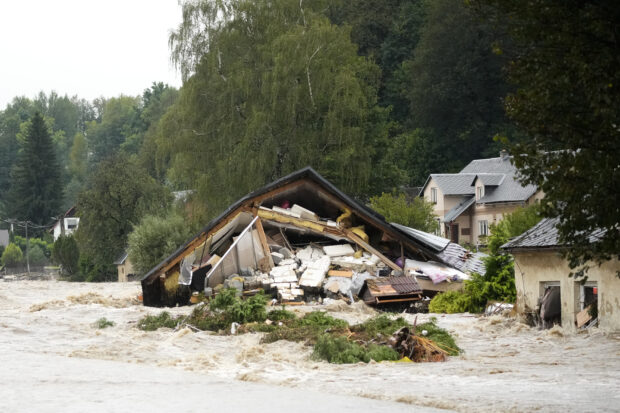Insured industry losses from the flooding in the Czech Republic, Poland and Austria in September 2024 will range from €2 billion (US$2.2 billion) to €3 billion (US$3.4 billion), according to Verisk, the data analytics and technology provider.
S&P Global Ratings estimates insured losses of €2.2 billion ($2.4 billion), while Guy Carpenter estimates a market loss between €1.6 billion and €2.1 billion (US$1.8 billion-US$2.3 billion) in its report on the floods published on Sept. 24.
Verisk went through details of the event. Similar to the June floods in Europe that primarily affected Germany, the September event was caused by a so-called Vb (five-b) weather system, a relatively unusual situation that can lead to significant extended periods of rainfall and flooding, Verisk said.
This event spread across several European nations during September with some of the worst impacts occurring along the border of Poland and the Czech Republic. The Polish Prime Minister’s office reported as of Sept. 19 that property damage was extensive, with at least 11,500 residential buildings—both single-family homes and multi-unit structures—either flooded or damaged. Additionally, more than 6,000 agricultural and commercial buildings, along with more than 700 public-use structures, including schools, kindergartens, sports facilities, administrative buildings, bridges and roads, were damaged or submerged.
The Czech Insurance Association reported during the week of Sept. 22 that more than 60,000 claims had been received by Czech insurers so far, with 19.3 billion CZK in insured losses (roughly €770 million or US$850 million). The report also indicated that roughly three-fifths of those claims are related to business insurance. While Vienna was spared major impacts by retention basins designed to protect the city, the surrounding region of Lower Austria had catastrophic impacts, largely from the River Wien, a tributary of the Danube.
According to local authorities, the floodwaters in this area were said to be roughly that experienced in 1,000 years on a long-term average. Parts of Germany, Hungary, Romania, Slovakia and Italy also experienced mild to moderate flooding impacts from this event.
The proportion of the economic impact of this event paid by the insurance industry will vary by country, Verisk continued. In Austria and Czechia, flood insurance take-up rates are relatively high, though lower limits on flood, especially in Austria, may offset this somewhat in the eventual insured loss tally. In Poland, most of the commercial risk is covered, but only a small fraction of homes and autos carry flood coverage.
Verisk’s loss estimates include insured physical damage to property (residential, commercial, industrial, auto, agriculture), both structures and their contents, from both on- and off-floodplain flooding. They also include additional living expenses (ALE) for residential claims and business interruption (BI) for commercial claims.
Verisk’s loss estimates do not include: losses in Germany or other countries not listed above; losses to uninsured properties; losses to infrastructure; losses from extra-contractual obligations; losses from hazardous waste cleanup, vandalism, or civil commotion, whether directly or indirectly caused by the event; demand surge, and other non-modeled losses.
Photograph: A destroyed house in Jesenik, Czech Republic, Sunday, Sept. 15, 2024. (AP Photo/Petr David Josek)
Related:





















 What to Expect in 2026: U.S. P/C Results More Like 2024
What to Expect in 2026: U.S. P/C Results More Like 2024  Women Are Now Leaning Out in the Workplace
Women Are Now Leaning Out in the Workplace  The Latest Launches from Allstate, WTW, Whisker Labs
The Latest Launches from Allstate, WTW, Whisker Labs  Viewpoint: Mapping Evolving Regulatory Terrain for MGAs, MGUs and Other DUAEs
Viewpoint: Mapping Evolving Regulatory Terrain for MGAs, MGUs and Other DUAEs 